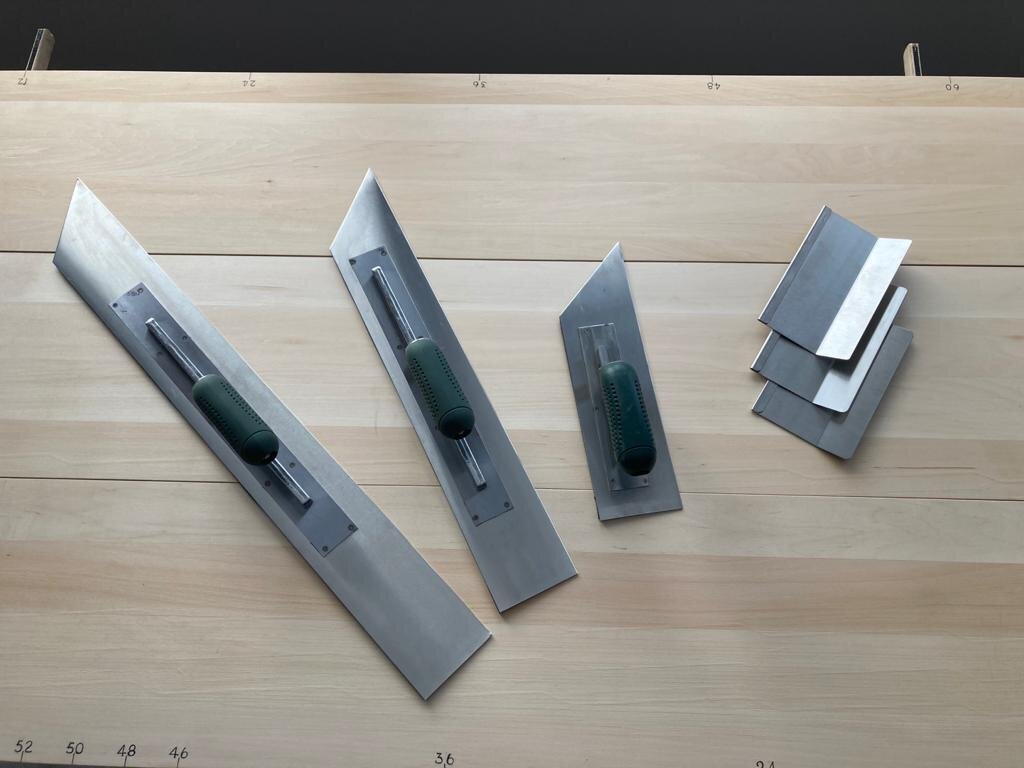Tools that make a difference
Trim Guides
Double Cutting Guides
What’s so great about these trim guides?
The thicker gauge of this stainless steel trim guide creates a slightly ‘fat’ cut which often has a more pleasing look compared to using a regular broad knife. It is especially good against a textured ceiling or where the wall is a different colour to adjacent trim.
The edges are radiused so you can slide to both set and cut the material in corners and ceiling lines sharply and quickly, and it will not burnish or take the color off as a plastic tool will do. You’ll find this tool helps you work faster, producing tighter inside corners.
Here’s a little trick for getting sharp outside corners: use the backside of your tool with the rolled edge. Don’t use the leading edge! Hold it across the corner at a 45° angle and run it firmly up and down which ‘breaks’ the vinyl, but it won’t scar it or take the color off - you can press pretty hard and you’ll hear a crunching sound. This technique creates a really sharp outside corner on many vinyls with no heat gun needed.
The different bends allow you to get into narrow areas to make a cut unlike a tool with a long handle. See our Facebook page for more videos: https://www.facebook.com/customwallpapertools/
Cut seams with control and confidence!
This tool provides great stability for making double cuts - you can easily do 1/16" cut if you have to. The handle provides a comfortable non-slip grip and the neoprene padding underneath the left edge protects the wallcovering from marring, prevents skidding and forces the cutting edge tight to the wall so the cut is precise. They are available in various lengths: 13”, 22” and 30”.
The 30” is faster for commercial vinyl (less times moving it down the wall;, it is long enough to be hooked on a scaffold and catch another bar so it does not flop and it also spans a 20-1/2” sheet on a 45° angle for mitering. The 22” length is good for all residential work. The 13" one works for headers and tight spaces.
The base is stainless steel to prevent rusting and the top is cut on a 45 degree angle to be able to start your cut at the very top on angled ceilings and stairwells no matter which way they slope. The pointed tip snugs under T-bar for a good start to every cut. They can also be made left-handed by special order.


